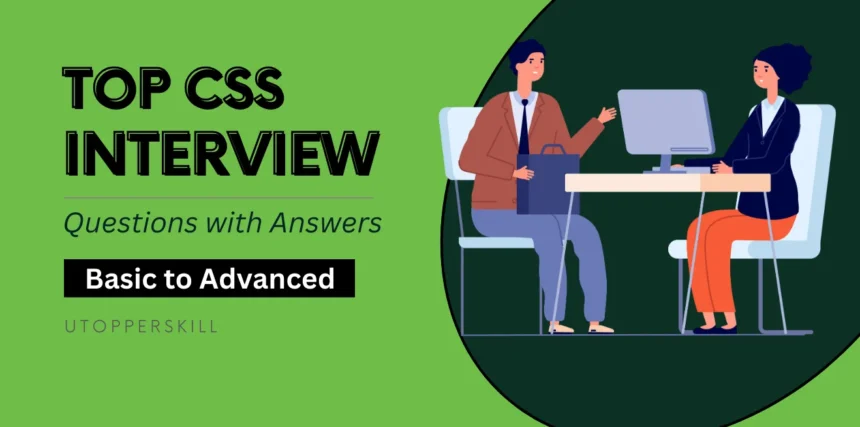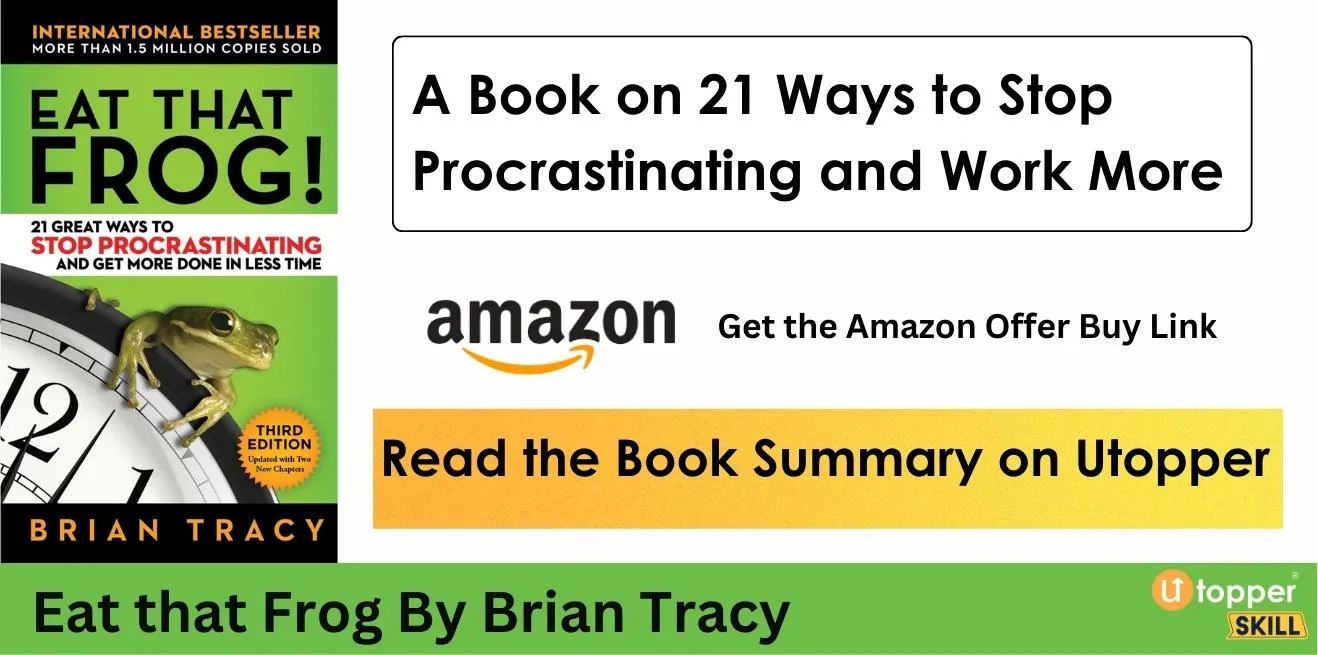Top CSS Interview Questions and Answers
Want to be a Front-End Developer or UI/UX Developer, our Top 40+ CSS Interview Questions and Answers is designed to help you to ace your next interview round. All essential topics such as selectors, box model, layout techniques, and responsive design, we cover everything you need to know. Perfect for beginners and experienced developers alike, this resource will help you confidently tackle any CSS-related questions and secure your next web development role. So let’s start to prepare these questions to boost your confidence and impress your interviewer.
CSS, or Cascading Style Sheets, is a stylesheet language used to describe the presentation of a document written in HTML or XML. It controls the layout, colors, fonts, and overall visual appearance of web pages. By separating content from design, CSS enables developers to maintain and update websites efficiently, ensuring consistent and responsive user experiences across different devices and browsers.
Basic CSS Interview Questions
Q.1 What is CSS and how is it used in web development?
CSS (Cascading Style Sheets) is a stylesheet language used to describe the presentation of a document written in HTML or XML. In web development, CSS is used to control the layout, colors, fonts, and overall visual appearance of web pages. It helps in separating the content of the page (from HTML) from its presentation layer (CSS).
Q.2 How do you include CSS in a web page?
There are three primary methods to include CSS in a web page: inline, internal, and external. Inline CSS is written directly within an HTML element’s style attribute. Internal CSS is placed within a <style> tag in the HTML document’s <head> section. External CSS is written in a separate file with a .css extension and linked to the HTML document using a <link> tag in the <head> section.
Q.3 What are selectors in CSS and how do they work?
Selectors in CSS are patterns used to select the elements you want to style. They range from simple, such as element tags (div, h1, p), class names (.classname), and IDs (#idname), to more complex ones like attribute selectors ([type=”text”]) and pseudo-classes (:hover). Selectors define which HTML elements should be affected by the defined styles.
Q.4 Can you explain the different types of CSS (inline, internal, and external)?
Inline CSS is applied directly to the HTML element via the style attribute. Internal CSS resides within <style> tags in the HTML document’s head section. External CSS is stored in separate .css files and linked to the HTML document through a <link> element. External stylesheets are most efficient for styling large websites as they allow multiple pages to share the same style settings.
Q.5 What is the CSS box model?
The CSS box model describes the layout of HTML elements in a structured way involving four parts: margin, border, padding, and the actual content. The content is wrapped by padding, then bordered, and finally margined, which affects the spacing and bordering of elements on a web page.
Q.6 How do you apply multiple stylesheets to a single web page?
Multiple stylesheets can be applied to a web page by linking several external CSS files using multiple tags in the HTML document’s head section. Styles are applied in the order they are linked, and later styles will override earlier ones if there are conflicts.
Q.7 What are classes and IDs in CSS?
Classes and IDs are selectors in CSS that identify HTML elements in a more specific manner than tags alone. A class can be reused multiple times on different elements within a single HTML document, while an ID is unique and should be used on only one element per page.
Q.8 What does the ‘cascading’ in Cascading Style Sheets mean?
The term ‘cascading’ in CSS describes how styles are applied to HTML elements based on priority rules and inheritance. If multiple styles are applied to an element, the styles ‘cascade’ down, giving priority to styles declared later in the CSS or closer to the element in the HTML.
Q.9 How can you integrate Google Fonts or other web fonts into a webpage?
Google Fonts and other web fonts can be integrated into a webpage by including a element in the HTML head to the font’s stylesheet. Then, use the font-family CSS property within your CSS to apply the font to elements on your webpage.
Q.10 What is the difference between padding and margin?
Padding is the space between the content of an element and its border, affecting the element’s size, while margin is the space between the border of an element and surrounding elements. Padding is inside the border; margin is outside.
Q.11 How do you make an image responsive using CSS?
To make an image responsive, set the width property to 100% and the height to auto. This makes the image scale according to the width of its container, maintaining its aspect ratio.
Q.12 What is the role of the display property in CSS?
The display property determines how elements are displayed on a page. Common values include block, inline, inline-block, and none, each defining how elements should flow within a layout.
Q.13 How do you align elements horizontally and vertically?
To align elements horizontally, use properties like text-align, margin, or justify-content (in flexbox). For vertical alignment, use vertical-align, align-items (in flexbox), or margin.
Q.14 What is the purpose of the z-index property?
The z-index property controls the stack order of elements that overlap each other. An element with a higher z-index is displayed in front of an element with a lower one.
Q.15 Can you explain the differences between visibility: hidden; and display: none;?
visibility: hidden; makes an element invisible, but it still occupies space in the layout. display: none; removes the element from the document flow, and it does not take up any space.
Intermediate CSS Interview Questions
Q.16 What are pseudo-classes? Can you give an example?
Pseudo-classes are keywords added to selectors that specify a special state of the selected elements. For example, :hover applies a style when the user hovers over an element, and :first-child targets the first child of its parent container.
Q.17 Explain the concept of specificity in CSS.
Specificity is a way CSS determines which rules apply to an element when multiple rules could apply. Specificity is calculated based on the number of ID selectors, class selectors, and type selectors. A higher specificity score means that the style will be applied over one with a lower score.
Q.18 How do you create a flexbox layout?
To create a flexbox layout, set the display property of a container to flex. This makes the container a flex container, and its direct children become flex items. You can then use various flex properties on the container to control the layout of the children, such as justify-content, align-items, and flex-direction.
Q.19 What are media queries and how are they used?
Media queries are CSS techniques used to apply styles based on the type of device displaying a web page, such as its width, height, orientation, and resolution. Media queries enable responsive design, allowing for different styles to be applied at different screen sizes or device capabilities.
Q.20 Can you describe the float property and clear property in CSS?
The float property places an element to the left or right of its container, allowing text and inline elements to wrap around it. The clear property is used to stop elements from floating, specifying on which sides (‘left’, ‘right’, ‘both’, or ‘none’) no floating elements are allowed.
Q.21 What is the difference between an absolute, fixed, relative, and static position?
absolute positioning places an element relative to its nearest positioned ancestor. fixed positioning places an element relative to the browser window. relative positioning moves an element relative to its normal position without affecting other elements. static positioning is the default, where elements flow in the order they appear in the document.
Q.22 How can CSS be optimized for performance?
Optimizing CSS for performance involves minimizing its size by reducing whitespace, merging similar styles, using shorthand properties, and removing unused rules. Efficiently organizing the file, serving minified versions, and using CSS compression techniques also enhance performance.
Q.23 Explain how CSS animations work.
CSS animations enable transition between styles over time. You can specify keyframes and the styles they should have at certain points, using @keyframes. Then, apply these keyframes to elements along with other properties like animation duration, timing function, and delay to control the animations.
Q.24 What are CSS preprocessors, and why are they used?
CSS preprocessors like Sass, LESS, and Stylus are scripting languages that extend the default capabilities of CSS. They allow variables, nested rules, mixins, inheritance, and other features that make CSS more maintainable, themeable, and extendable.
Q.25 How would you implement a grid layout in CSS?
To implement a grid layout, use CSS Grid Layout by setting an element’s display property to grid. Define columns and rows with grid-template-columns and grid-template-rows. Place child elements using grid-column and grid-row to specify their location within the grid.
Q.26 Describe the use of attribute selectors in CSS.
Attribute selectors in CSS target elements based on their attributes or attribute values. For example, [type=”text”] selects all elements with a type attribute value of “text”, and [href*=”example”] selects all elements whose href attribute contains the substring “example”.
Q.27 How can you handle browser compatibility issues in CSS?
Handle browser compatibility issues by using CSS resets to normalize styling across browsers, employing fallbacks for older browsers, using feature detection with libraries like Modernizr, and testing CSS across different browsers and devices to ensure consistency.
Q.28 Explain the use of the :before and :after pseudo-elements.
The :before and :after pseudo-elements are used to insert content before or after an element’s content via CSS. They are often used to add decorations, counters, or other content that should not be in the HTML.
Q.29 How do you use CSS variables for maintaining a consistent style?
CSS variables (custom properties) are used to store specific values to be reused throughout a document. They are set using the — prefix and accessed using the var() function, allowing for easier theming and real-time updates of CSS properties.
Q.30 What is the CSS calc() function and how would you use it?
The calc() function performs calculations to determine CSS property values. It can mix different units, such as percentages and pixels, enabling dynamic sizing of elements based on relative conditions like calc(100% – 20px).
Q.31 Can you explain the difference between em and rem units?
em units are scalable and relative to the font-size of their parent element, while rem units are relative to the root element’s font-size. This makes em good for responsive typography and rem for consistent spacing across the document.
Q.32 What are some ways to handle text overflow in CSS?
Handle text overflow in CSS using the text-overflow property combined with overflow and white-space. Common values for text-overflow include ellipsis, which displays an ellipsis when text overflows its container.
Q.33 How do you apply a CSS style to an element when it has focus?
To style an element when it has focus, use the :focus pseudo-class. This is commonly used to change the appearance of buttons, inputs, and other interactive elements when they are interacted with via a keyboard or mouse.
Q.34 What is the object-fit property and how is it useful?
The object-fit property specifies how an <img> or <video> should be resized to fit its container. Common values are cover, contain, fill, and none, allowing control over how media content is displayed within its bounding box.
Q.35 How would you create a multi-column layout?
A multi-column layout can be created using the CSS column-count and column-gap properties, which divide the content of an element into multiple columns with a specified gap between them, ideal for creating magazine-like layouts in pure CSS.
Advanced CSS Interview Questions
Q.36 What is the CSS content property and how is it used with pseudo-elements?
The CSS content property is used with the :before and :after pseudo-elements to insert generated content into the document. It can display text, images, or other content before or after an element’s actual content. For example, it can be used to add icons or decorative quotes around text.
Q.37 How do you create complex animations using keyframes in CSS?
Complex animations in CSS can be created using the @keyframes rule, which allows you to define the styles that the animation will apply at various points within the animation sequence. You can specify multiple keyframe selectors (percentage or from/to) to change the appearance and behavior of an element at different points in the animation timeline.
Q.38 What is the role of CSS in web accessibility?
CSS plays a crucial role in web accessibility by providing flexible control over visual presentation and layout. Proper use of CSS can enhance the accessibility of web content by improving readability and navigability, offering multiple ways to present information, and facilitating dynamic adjustments for different accessibility needs.
Q.39 Can you explain the stacking context in CSS?
The stacking context in CSS is a three-dimensional conceptualization used to determine which elements cover others in page layout. Elements with higher stacking context values appear above those with lower values. Factors affecting stacking context include positioning (position property values other than static), z-index values, and certain CSS properties and values like opacity and transforms.
Q.40 How can CSS be used to create scalable vector graphics (SVG) effects?
CSS can be applied directly to SVG elements within an HTML document to create effects such as color changes, transformations (like scaling or rotating), and transitions or animations. By styling SVG with CSS, you can control these vector graphics with the same styles and responsiveness as any other HTML element.
Q.41 What are the benefits and drawbacks of using CSS-in-JS?
Benefits of CSS-in-JS include:
- Local scoping of styles to components, reducing global stylesheet conflicts.
- Dynamic styling capabilities based on component state or props.
- Potential for better performance by injecting only the styles needed for rendered components.
Drawbacks include:
- Additional complexity and learning curve.
- Potential performance impacts from runtime style calculations.
- Less straightforward for those accustomed to traditional CSS.
Q.42 How do you optimize CSS for critical rendering path performance?
Optimizing CSS for the critical rendering path involves:
- Minimizing CSS size and complexity to reduce parsing and rendering time.
- Using media queries to load only necessary styles.
- Employing techniques such as CSS minification, using CSS preprocessors for cleaner code, and deferring non-critical CSS.
Q.43 Explain the concept of CSS containment (contain property).
The CSS contain property allows a developer to indicate that an element’s subtree is independent of the rest of the page. This can improve performance by allowing browsers to not consider the rest of the page when rendering changes to this element. Containment types include layout, style, paint, and size.
Q.44 What techniques can be used to create a responsive design without media queries?
Responsive design without media queries can be achieved through:
- Fluid layouts using percentage-based widths.
- Flexible images and media, using max-width and relative units.
- CSS Grid and Flexbox for flexible and adaptive layouts.
- Viewport units for sizing elements relative to the viewport size.
Q.45 How does the CSS Grid Layout differ from Flexbox and when would you use each?
CSS Grid Layout provides a two-dimensional grid-based layout system, enabling more complex layouts with rows and columns. It is ideal for larger-scale layout designs, where managing both dimensions simultaneously is beneficial.
Flexbox provides a more straightforward, one-dimensional layout method, ideal for smaller-scale layouts where elements need to be distributed along a single axis (either row or column). It’s especially useful for aligning content within a container or distributing space between items.






